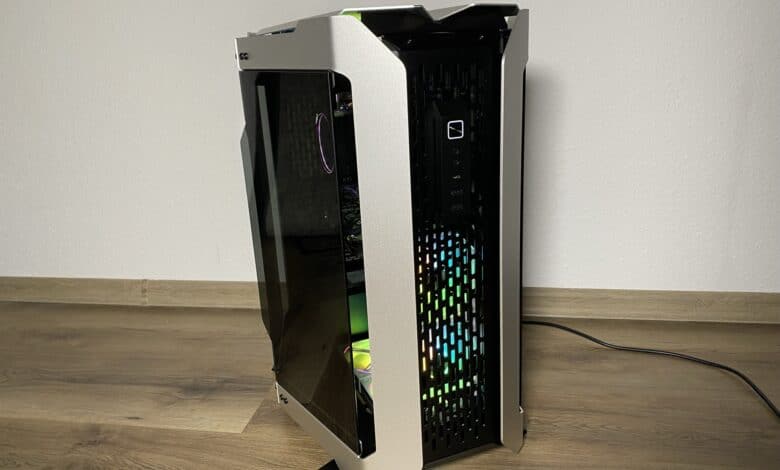
At the last DIGITAL EXPO 2021 of Lian Li, some novelties were announced, which were launched after a time individually. Among them, the big tower called ODYSSEY X was announced, with many unique features mentioned. However, the entire article was kept quite short, as other products were more in the foreground of the EXPO. Now the wait has come to an end for all big tower fans. Therefore, we would like to offer the ODYSSEY X our stage and take a closer look. Has the somewhat too short review been justified? A little info in advance: We built and tested the case in the performance variant. What exactly that means, you will learn in the following article!
Technical data
| Product name | LIAN LI ODYSSEY X | |
|---|---|---|
| Model | TR-01X | TR-01A |
| Color | Black | Silver |
| Dimensions | Dynamic/Dynamic-R (Rotate) (D) 575.5 mm x (W) 234 mm x (H) 558.5 mm Power (D) 537.1 mm x (W) 368.6 mm x (H) 596.7 mm |
|
| Materials | Aluminum Steel 4.0 mm Black tempered glass (both sides) |
|
| Mainboard support | EEB/E-ATX/ATX/Micro-ATX/Mini-ITX | |
| Fan support | Dynamic. Front: 3 x 120 mm or 2 x 140 mm Top: 3 x 120 mm or 2 x 140 mm Side: 3 x 120 mm or 2 x 140 mm Dynamic-R (Rotate) Front: 3 x 120 mm or 2 x 140 mm Base: 4 x 120 mm or 3 x 140 mm Performance Front: 4 x 120 mm or 3 x 140 mm Top: 3 x 120 mm or 2 x 140 mm COOLER BODY Dynamic. Front: 1 x 360/280/240 mm Side: 1 x 360/280/240 mm Dynamic-R (Rotate) Front: 1 x 360/280/240 mm Base: 1 x 480/420/360/280/240 mm Power Front: 1 x 480/420/360/280/240 mm Top: 1 x 360/280/240 mm |
|
| Length PSU | Max. 280 mm | |
| Length distance of GPU | Max. 423 mm | |
| Height distance of the CPU cooler | Max. 167 mm | |
| Memory slots | 3 x 3.5″ HDD or 3 x 2.5″ SSD | |
| Expansion slot | 8 | |
| I/O ports | 2 X USB 3.0, 1 X USB 3.1 TYPE-C, 1 X HD-AUDIO | |
| Warranty | 1 year | |
| Price | € 419.27* | |


Packaging & Scope of Delivery
When a big-tower is delivered, sometimes you feel sorry for the parcel carriers – lifting such a massive box is the first challenge before the actual start. With a total weight of about 20 kg including packaging, the ODYSSEY X is delivered to your home. However, the optical packaging makes a very good first impression. As a small teaser, the two different looks are shown from the outside – and that doesn’t mean the different available colors.
Inside the package, everything is neatly and carefully packed. On top of the actual contents is a small white box with the packaging inserts. Below this are the individual elements: The case itself, the discs and the attachable panels separated from each other in foam. Here, therefore, really nothing can be damaged during transport.
Also very nice and worth mentioning is the box for the screws for the case. Here, no expense was spared and something sensible and high quality was included for reuse. Better than packing all the screws individually in plastic and thus producing even more waste. Small details can make the difference.
External Impression
How exactly the details can make a difference can be seen exceptionally nicely in this chapter. However, let’s start with the basics – the foundation of the ODYSSEY X. This is where all the magic of the case begins. The base has been delivered unassembled for a reason, but as far as it was possible open as a kind of construction kit. The first step was to choose one of the possible three variants with two substantially different looks. The simple normal look, a rotated variant of the normal look and finally a performance variant that we tested. Depending on the decision, you can look at the base from a different angle.
So now it’s down to the details – all the parts of the ODYSSEY X create a noble impression right out of the box. The components are externally high-quality, the black paint on the base looks super even and thick, the silver aluminum is slightly rough and without sharp edges. Everything thus makes a solid impression. Another good example are the metal plates including clips. They look a bit more unstable at first glance, but the aluminum is so thick that nothing can break off here. Material costs were certainly not spared, but this is also reflected in the price.
The ODYSSEY X’s glass panels are also particularly well done. And not only because of their looks. A small, sensible ventilation and cooling trick has been used here. In the center, as well as on the respective sides, there are small gaps between the glass and the aluminum. The case is thus opened and ventilated a bit more on both sides in simple places. However, there is also no filtering of the air with a dust filter on the entire ODYSSEY X.
The panels are attached to an attached clip mechanism, into which you first snap the panels into the holder starting from one half. Finally, you repeat this principle for the other half and screw the panel to the top center of the base with two screws for further security. It’s an interesting concept, but one that was a bit of a challenge for us at times. It happened to us a few times that when you had the first half firmly and supposedly securely in the clips, it flew out again when you tried it on the other half. The reason for this is the curvature of the glass panel. We couldn’t reproduce a sovereign way to do this, so both sides could be mounted without scratching the bracket – which disappointed us a bit.
Another double-edged sword are the included aluminum panels for the, in this case the performance variant, top of the case. Without mounted panels, they can be freely adjusted, allowing the case to be customized. Unfortunately, though, you’re limited to one option when mounting the panels, otherwise they don’t sit properly in the clips at the top and just sit up.
In contrast, we find the I/O panel of the ODYSSEY X to be very successful. A simply fitting and not too clunky design with the most important ports, additionally with USB-C and a power button that you would like to press.
We continue with the back. Basically, everything here is as usual, except that you can’t attach a standard 120mm fan to the back. However, this is not a tragic loss considering the type and design of the case.
Finally, there is the bottom and the feet that come with it. Here we have to express our praise once again. The feet are completely equipped with anti-slip pads on the underside. They are solid and their position can be changed quite easily without much effort if desired. No matter where they are, stability is a given.
Interior impression
Next, let’s take a look inside the ODYSSEY X, probably the most exciting part of the entire case. Here you can change quite a bit of the design of the case, depending on the shape you want to end up with. This is also reflected in the interior with the conspicuously large number of screws. Whereby just about every screw has a justified purpose. Mainboard plate for ITX to E-ATX mainboards, PSU bay, water pump mount, front IO and even the rail for the fans can be disassembled and reattached at another location. This is a unique concept that involves effort due to conversions. However, this allows the case to be modified in several ways.
There is no need to talk about the quality of the screws and screw points, in the ODYSSEY X. Here Lian Li has again done a very good job. The conversion is therefore fun and easy to do. A bit stranger, however, are the points where the cables enter the interior from the back. Four out of a total of eight holes, through which cables can run, are rubberized. This is especially noticeable in the performance variant, as two of the original three holes running directly next to the mainboard plate are covered by the mainboard, including the rubber coating.
At the same time, the options for attaching fans are especially nice. Four 120 mm fans can be attached to the front, and if the PSU slot is omitted, another two 120 mm or 140 mm fans can be mounted at the bottom. On the top, the cutout looks compatible for four 120mm fans, but there is only room for three more 120mm or 140mm fans. Lastly, there would also be room for four 120mm fans in the inner panel, but this is not usually needed. The case is open and big enough for that.
Unfortunately, the number of possible 2.5″ SSD and 2.5″ to 3.5″ HDD slots had to suffer. There are a total of three rails on the back, which hold onto the center panel with four screws. These are rubberized at the screwing points to protect the panels. With a bit more skill, there would have been room for more slots on the back or inside of the center panel. For this, only three rails were included, which can be a bit meager in a big-tower case.
Assembly
In the next section, we want to say a few words about the overall assembly of the ODYSSEY X. But first, a compact listing of all the components used in the test:
- AMD Ryzen 3 2200G with Radeon Vega GPU
- AMD Wraith Prism LED RGB fan
- MSI B450I Gaming Plus Max WIFI
- Corsair Vengeance LPX 2x 8GB DDR4 2400MHz C14 XMP
- EVGA GTX 980
- Corsair CX650M 650 Watt
- SanDisk Ultra 3D SSD 250GB
- Seagate Constellation ES.3 HDD 3.5″ 3TB SATA III 128MB 7200U/min
- Lian-Li UNI FAN AL120 RGB PWM fan
As expected, the whole assembly went off without any problems. The screws fit the holes, the components fit tightly in their places, and thanks to the small and nice box of screws, the proper tools were included. Still, we noticed two points that we’d like to address as areas for improvement.
So let’s start with the first one, which in this case would be the PSU bay with the optional bezel. In our assembly, we chose not to install this bezel – for both visual and practical reasons. Once it looks a bit out of place, due to the resulting gap between bezel and PSU. Depending on the PSU, this point can be different accordingly. However, if you do without the bezel, you also get another place for a fan at the bottom.
The second special thing you can see on the back. If you screw the PSU bay tight, the cables from the PSU have to take a somewhat unnecessary route to the bottom HDD or SSD. Out of the hole down past the HDD or SSD to the front of the case and then finally around the corner to the HDD. A buckle to tighten the cables is present at this point, but does not create a nice picture due to the transparency of the glass panel on the back. In addition, the silver cable bezel could have been adjustable to cover the cables a bit more on the right side.
Cooling
Now we have arrived at the last and as always most important chapter: the cooling of the ODYSSEY X including possible airflow variants. In our system, we opted for an airflow from the bottom right diagonally to the top left, with a total of six liters from Lian Li. In order to get a comparable test, we tested the system in the same conditions as the other values of the cases. At a room temperature of about 22 °C, we heated up our system using Prime95 for a 30 minute interval. These are our results:
| Fan performance | Temperature CPU | GPU temperature |
| Lian Li Odyssey X: 5v without load | 26 °C | 26 °C |
| Lian Li Odyssey X: 12V with load | 67 °C | 72 °C |
| Lian Li Lancool 215: 5V without load | 27 °C | 27 °C |
| Lian Li Lancool 215: 12V with load | 72 °C | 75 °C |
| Thermaltake AH T200: 5V without load | 34 °C | 26 °C |
| Thermaltake AH T200: 12V with load | 70 °C | 76 °C |
The results show well what the case is most worthwhile for: a high-end system with many fans, radiators and a pump including an expansion tank. Based on the large interior space, two large radiators can be installed here, which can provide quite a bit of cooling for the system. In our case, with an air-cooled system, it shows that low temperatures can be achieved through a lot of space in the interior and many individual holes, through which more air comes into the interior.
Unfortunately, this also makes the case a bit more susceptible to dust, as no dust filters have been installed, only large-hole mesh. Apart from this fact, it is solid results that the ODYSSEY X has achieved together with Lian Li’s AL 120 fans.
Conclusion
Now we have reached the end of our review, which brings us to summarize a few final words about the ODYSSEY X. Quality, workmanship and features – here Lian Li has once again gone one better and shown the other manufacturers how to do it right. Every element feels valuable and noble, even with the screws they have spared no expense and effort to include a small good-looking box with reuse value. Depending on which of the three possible variants you choose, you have to do some tinkering before you get to the actual assembly of the system, which was a lot of fun in our case, though.
There is also a lot of space inside for the components, so that you can install a proper custom water cooling system. Without water cooling and with a normal air cooling, the case of course makes a solid impression, as expected. Nevertheless, we have a small minus at the end – for the Lian Li ODYSSEY X you have to dig a little deeper into your pockets. Currently, the big tower is available for around € 419.27*. A high, but justified price.
Lian Li Odyssey X
Workmanship
Structure
Features
Dampening
Cooling
Value for money
89/100
The Lian Li ODYSSEY X offers plenty of room for custom water cooling, but has some strengths and weaknesses.




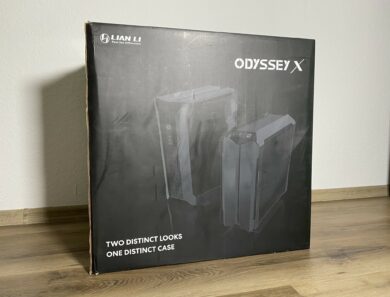

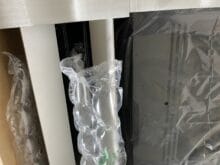
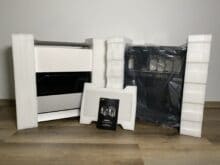
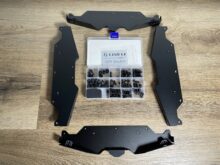
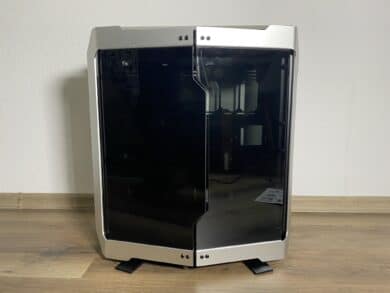
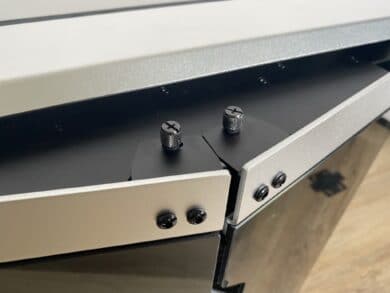
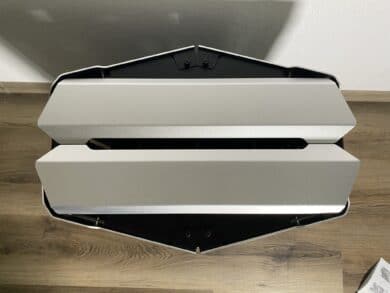

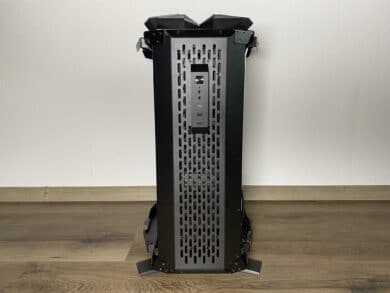
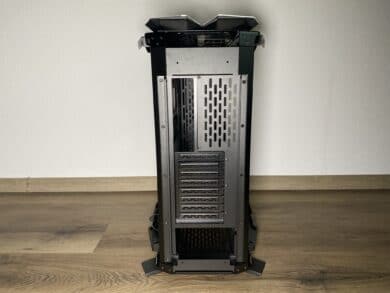



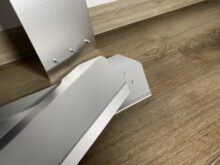
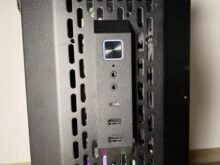
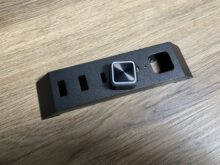
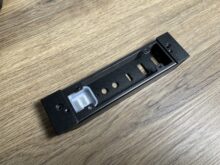

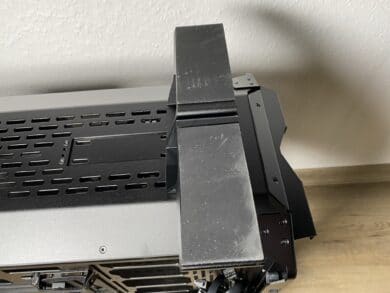
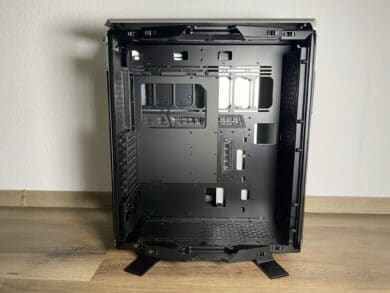
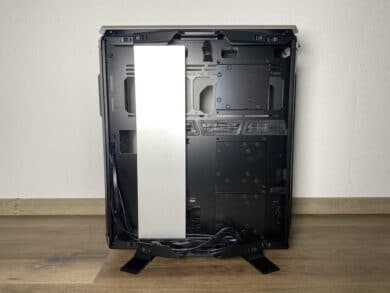
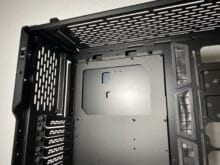
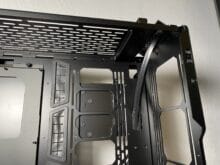
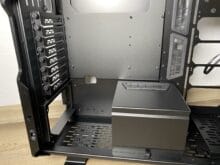
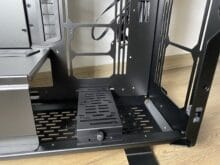
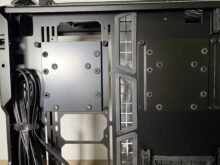
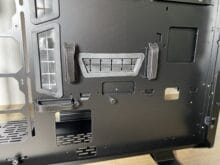

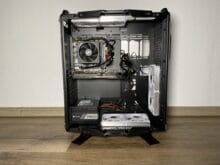
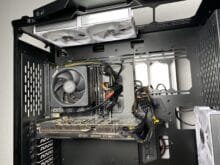
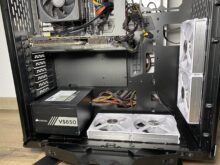
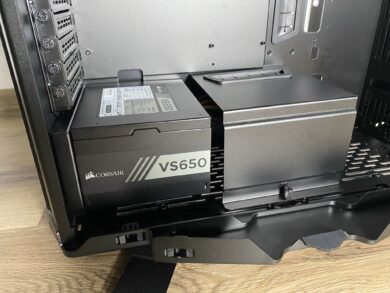
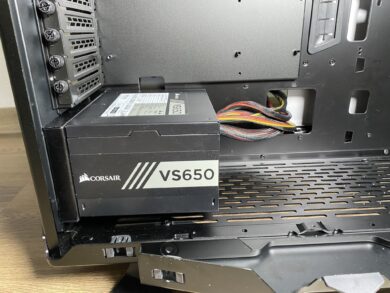

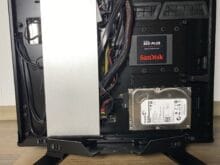


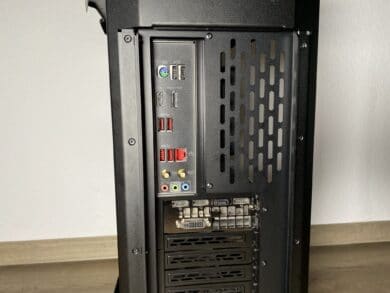




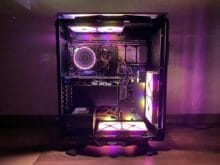
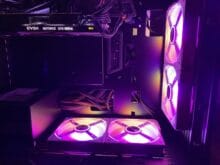
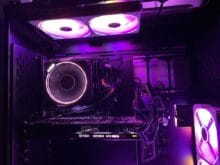
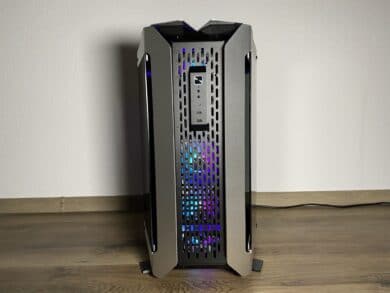






No replies yet
Neue Antworten laden...
Neues Mitglied
Beteilige dich an der Diskussion in der Basic Tutorials Community →